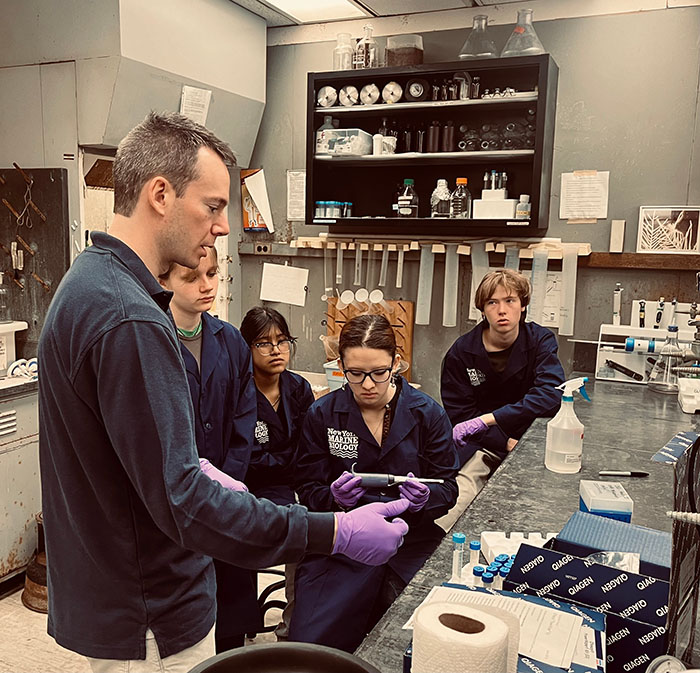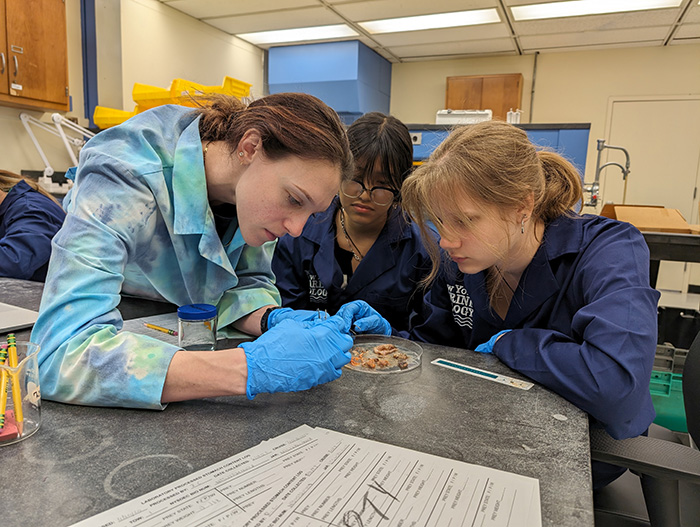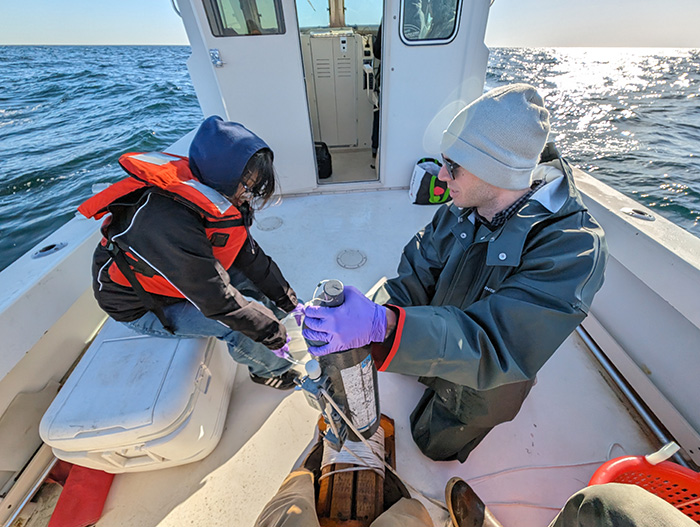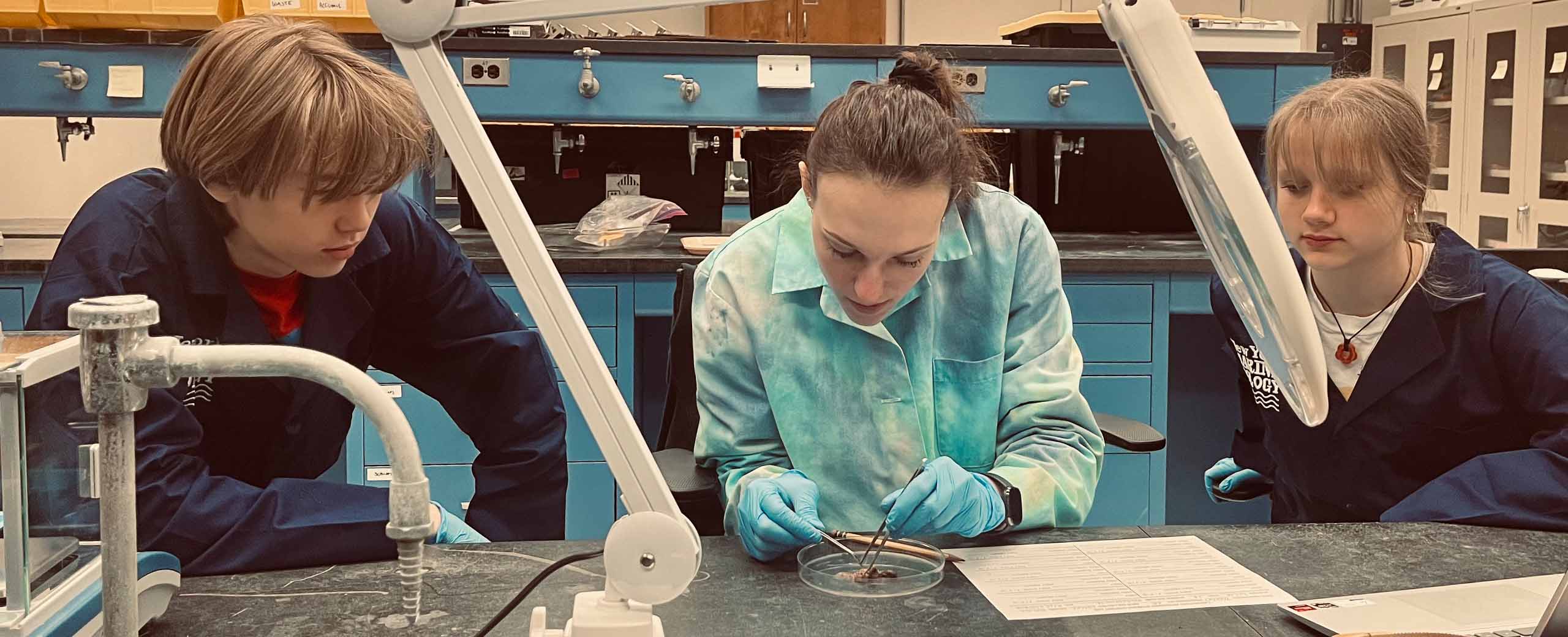In a unique collaboration, ECOncrete is proud to partner with motivated students from the New York Harbor School. See their insightful report below.
In 2023, ECOncrete was awarded funding from the New York State Energy Research and Development Authority (NYSERDA) to advance Nature-Inclusive Design for Offshore Wind by conducting a scientific evaluation of nature-inclusive designs in offshore wind marine infrastructure and their associated benefits for fisheries.
This multi-year ecological monitoring project includes ECOncrete collaborating with researchers from Stonybrook’s School of Marine and Atmospheric Sciences. The focus is to monitor the potential for enhancing site biodiversity at offshore wind farms by incorporating ecologically designed scour protection units as part of the wind farm. The monitoring examines changes in fish population and diversity associated with these structures.
As part of this initiative, ECOncrete invited student researchers from the New York Harbor School, located on Governors Island, New York, NY, to participate. The program included five students and staff members who took part in fieldwork and laboratory analysis. Their activities included a site visit at 12 Mile Reef—an area designated by the NYCDEC for artificial reef activities—and lab-based analyses such as digestive studies on black sea bass and environmental DNA (eDNA) sampling.

Cody Garrison, PhD. from Stony Brook University leads a team of students in eDNA sampling from the field
Field Visit Account by Students George Oddy and Rory Chau:
“On the research trip, we began our day early by boarding a boat to collect environmental DNA (eDNA) samples using a Niskin bottle. A total of 10 samples were collected, with three replicates taken from each of three different sample sites: concrete, control, and ECOncrete, plus one blank sample. To ensure the samples were collected at the correct depth, we used a weight to submerge the bottle – and then retrieved it with the help of a motor pulley system.
Once back at the lab, we began the filtering process. Four liters from each sample were passed through filters, and the filtered samples were sent to another lab for eDNA analysis. On the final day, we worked with Krystina from Prof. Chen’s lab on analyzing the stomach contents and extracting otoliths from black sea bass individuals.

Analyzing stomach contents with Krystina Braid
We discovered a variety of prey items, including Jonah crabs, Atlantic rock crabs, sea mice, and clams. During this process, we gained insight into the lab’s methodology and discussed the challenges and successes they had encountered during previous sample collection trips.
As we return to Harbor School, we are continuing our research through a senior project in marine biology based on the work we did at Stonybrook with ECOncrete.
We learned a lot about what makes a real research project work. It was fascinating to learn from experienced scientists and help find real solutions to one of the biggest problems of our time. One thing we learned about research is that while you can’t stop every problem from happening, you can reduce the chances and be ready for the few that do come up.
While working on the water, we realized how important it is to plan ahead, especially when it comes to things like clothing—since it got cold and wet on the boat.
Switching to renewable energy is crucial for fighting climate change, but we also need to make sure it doesn’t harm nature. As we use more clean energy like solar, wind, and hydropower, we have to think about how they affect wildlife and the environment. By reducing pollution and carefully planning these energy projects, we can make sure that moving to renewable energy helps both the planet and the fight against climate change.”
Looking Ahead:
Together, we’re building a future where nature thrives, and communities come together to protect and celebrate our marine ecosystems. Projects like this highlight the importance of integrating ecological considerations into renewable energy development, ensuring that solutions for climate change also support biodiversity and environmental health.
Learn more about this project:
